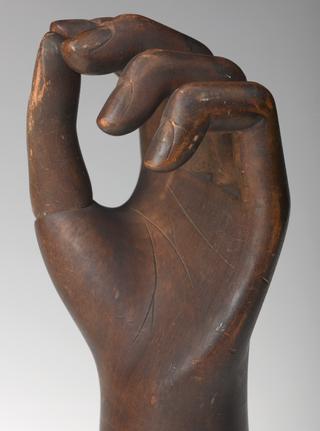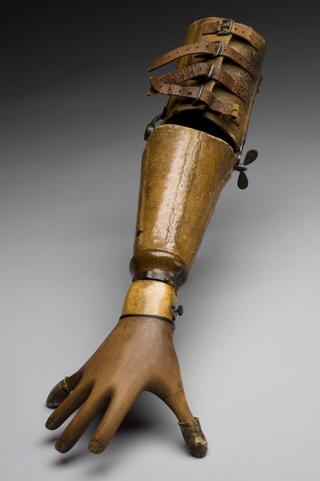
Carbon dioxide cylinder to power limb prosthesis
- maker:
- Walter Kidde Company Limited
Carbon dioxide cylinder, metal, to power limb prosthesis, English, 1960-1970
Carbon dioxide is released from a canister by the wearer of prosthetic/artificial limbs moving their shoulders and body. However, the gas often made a hissing noise, and the system was far from fool proof. When the gas built up, it could then be released in a rush causing the arm to move suddenly and in unexpected ways. At mealtimes, this could send food flying across the room. Gas-powered arms were bulky, heavy, painful to wear and hard to use, many felt they had less independence whilst wearing the prosthetic limbs than learning to adapt without them. Few have continued to use prosthetic limbs into adulthood.
Prosthetic or artificial limbs were in part meant to act as reparations for the impairments that thalidomide had caused. They were frequently used as a way of visually “normalising” the bodies of people living with thalidomide impairments. Many question who these supposed improvements were really meant to help. Some children underwent operations to make the prosthetic limbs fit better which could include amputations. Children had little input into these decisions and the trauma of some of these medical interventions is still felt today, both emotionally and physically.
Thalidomide was a compound found in drugs prescribed to people in the late 1950s and early 1960s. Although today it is associated primarily as a treatment for pregnancy related nausea, it was also prescribed to anyone experiencing symptoms of colds, flu, headaches, anxiety, and insomnia. Thalidomide causes nerve damage in the hands and feet of adults, but when taken in early pregnancy it causes impairments such as limb difference, sight loss, hearing loss, facial paralysis, and impact to internal organs. One tablet is enough to cause significant impairments. Researchers later identified that there was a link between the impairment a person is living with, and which day of the pregnancy thalidomide was taken. UK distributors withdrew the drug in 1961 and a government warning was issued in May 1962.
Details
- Category:
- Orthopaedics
- Object Number:
- 1981-2024
- Materials:
- complete, metal and plastic (unidentified)
- Measurements:
-
overall: 220 mm 31 mm, .24 kg
- type:
- gas cylinder
- credit:
- D.H.S.S. (Russell Sq.)




